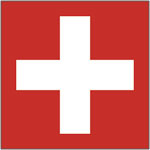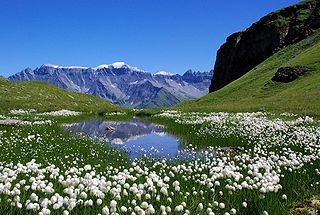PART I: In what biome (or biomes) is Switzerland located?

One way of starting to answer a very difficult and challenging question is to say that the entire country of Switzerland is found within a terrestrial biome. In other words, Switzerland is classified as a land-based instead of an water-based (or aquatic) biome.
Terrestrial biome >
Within the terrestrial biome, Switzerland is considered to be part of a temperate zone. More specifically, Switzerland is found within the “north temperate zone” which extends from the Tropic of Cancer (at about 23.5 degrees north latitude) to the Arctic Circle (at approximately 66.5 degrees north latitude). Temperate zones typically experience relatively moderate seasonal differences between summer and winter, rather than extreme hot or cold. However, that said, in certain temperate zones the variations between summer and winter can be more extreme because these areas are either far away from the sea/ocean or they posses land features such as mountain ranges that can dramatically alter the elevation profile of the temperate zone in question.
Terrestrial biome > (north) temperate zone >
Within the terrestrial biome, and within the temperate zone, Switzerland is considered to be part of a biome known as the broadleaf and mixed forest. Because it’s in the temperate zone, you might also see it called the temperate broadleaf and mixed forest.
Terrestrial biome > (north) temperate zone > (temperate) broadleaf and mixed forest
-
- OOPS! I know many of you selected it, but we can’t say with complete accuracy that Switzerland is entirely covered by the deciduous (or temperate deciduous) forest biome because throughout much of the country there is a thorough blending or ‘mixture’ of deciduous and coniferous trees. Similarly, we can’t say with complete accuracy that Switzerland is entirely covered by the coniferous (or temperate coniferous) forest biome.
What about those of you who selected certain biomes for Switzerland such as the montane forest, taiga, tundra, mediterranean, mountain, and alpine? Let’s deal with each of these individually below:
Montane forest…now this is a tough one. If you listed the montane forest in your project, you were sort of correct. A better answer would probably be, “montane grasslands and shrublands,” which are typically located above the tree line are more commonly known as “alpine tundra,” which occurs in mountain regions around the world.
Mountain…yes, we have mountains in Switzerland, but we could be much more precise in our answer by not using the term “mountain biome.” Scientists are more likely to use the term “mountainous region” rather than “mountainous biome.” Instead, we could be more specific by using the names of biomes commonly found within mountainous regions. Are you confused yet?
Taiga…we do not have the taiga biome in Switzerland. However, because we have mountainous regions, we do have many regions of the country that bear a close resemblance to the taiga biome. However, it would be more accurate to refer to these areas as concentrated regions of temperate coniferous forest found within Switzerland’s temperate broadleaf and mixed forest biome.
Tundra…we do not have a tundra biome in Switzerland, but we do have an “alpine tundra” biome, and you can find it above the tree line in the Swiss Alps (see the discussion of the montane grasslands and shrublands biome just above).
Alpine…we do have an alpine biome in Switzerland, but we can be more precise by referring to it as an “alpine tundra biome” (see the discussion of the montane grasslands and shrublands and alpine tundra biomes just above).

This finally brings us to the canton of Ticino, in which we find the city of Lugano, the comune (or comunale) of Montangnola and, more importantly, the campus of TASIS Switzerland. There is one last issue to address, and that is whether or not–as many of you said in your research proejcts–we have the mediterranean biome in Switzerland.
But this is an issue that will be addressed in PART II…
Readers: Are you’re persuaded by Mr. M’s take on the question you’ve all been tackling in your research projects? For example, did he reveal his sources of information? Please leave either challenges or compliments in the Comments section below…both are always welcome.
